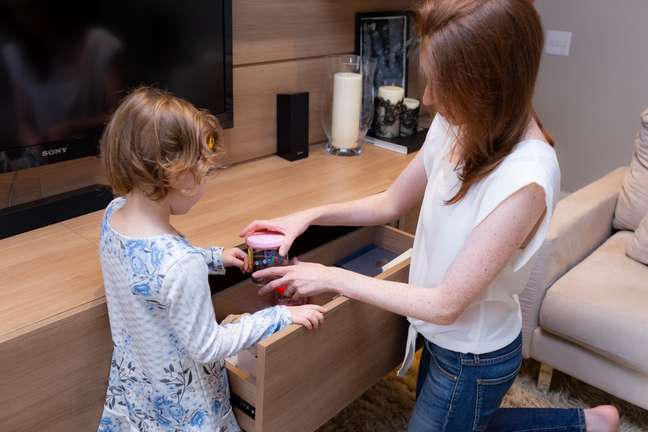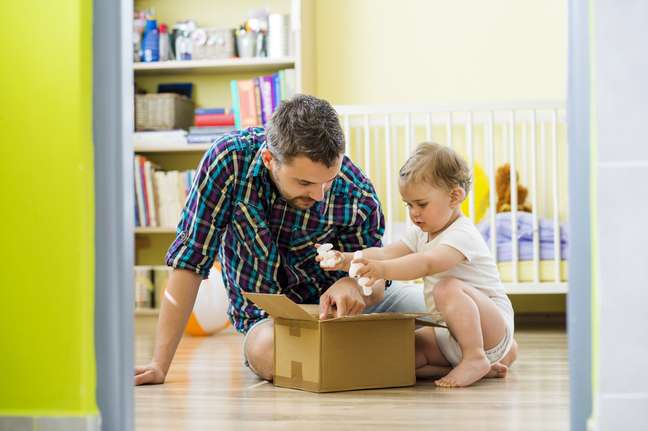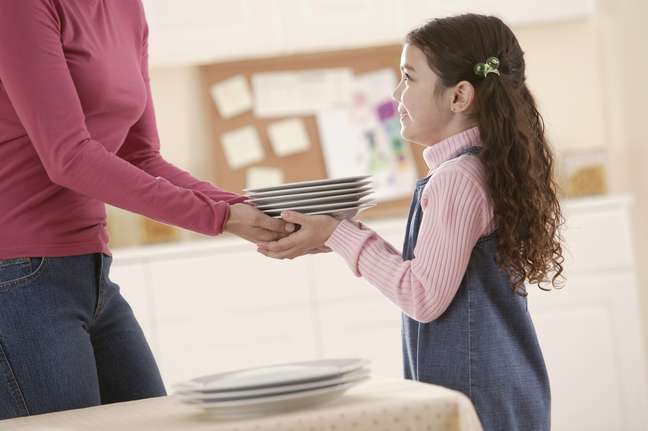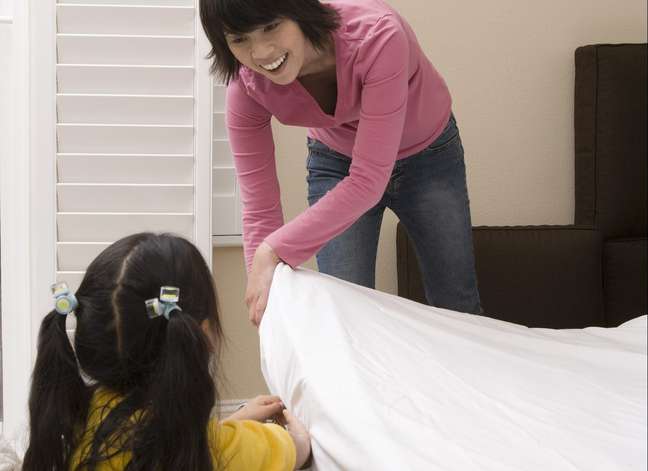Including the little ones in household chores helps their development and self-esteem. Find out how to do it lightly and naturally!
“Game over, time to save.” If you’ve always heard this when you were a kid, you’ve probably grown up knowing that things have their place and that after the mess – which is part of every healthy family dynamic – comes the organization.

And there is no doubt: the habits we develop in childhood remain in our daily life in a natural way., without becoming a boring and heavy obligation. That’s why letting the little ones know from an early age how simple and even pleasant it is to keep the environment in order makes so much difference.
learn by example
“The first way to introduce it to children is through the parental model,” explains Nalini Grinkraut ( @nalinigrinkraut), personal organizer specializing in detachment and well-being. “In general, we learn much more by example than by what we are told. A house with disorganized adults ends up creating the reference of a messy environment for the child “, warns the professional.
For a tidy house, however, it is not necessary to exaggerate with rules and punishments, quite the contrary. The idea is to introduce activities in a natural way, such as putting toys back on the shelf, putting dirty laundry in the basket and taking the used plate to the sink.
“From the moment the baby starts crawling and interacting, you can encourage him to put things back, you can show he has a proper space where they should be kept,” Nalini guides. “So, as the child’s autonomy increases, new activities come in,” she adds.

Skills development
But if you are afraid of including your child in housework just thinking about it, it is important to remember this this is a contributing habit – and a lot! – for its development. “When a child feels motivated to help, he sees himself as part of the home, it creates a sense of responsibility and independence, not to mention the development of skills, such as motor coordination,” stresses the personal organizer. In addition, the little one who knows the work that certain things give values much more when a certain task is done, also helping to better take care of spaces, because he understands that objects do not arrange themselves by themselves.
Encouragement from parents and caregivers
Being present is essential in this process. From supervision and assistance at the beginning of learning, to praise. “When you show the child that he is able to do an activity, you contribute to his self-esteem, also stimulating autonomy,” recalls Nalini.
For what, Praising the behavior is of great importance. Talk like “how nice of you to bring the dishes off the table!” and “see how you can store your toys yourself” are great examples. The specialist also suggests showing the result of what the child did. “You can say ‘look, when you put your toys away, it’s much easier to find them later’ or ‘when you help me wash the dishes, we’re done a lot faster,'” he exemplifies.
Still thinking about it, Nalini lets a important Notice: doing what the child has done is extremely harmful, as criticism ends up demotivating the little ones. “We adults already have a higher standard of perfectionism, because we have more technique. But the child does not, he does it following his own pattern, which gradually improves according to habit and training”, he reiterates. Therefore, no making of the bed because the duvet was crooked or rearrangement of cutlery and plates on the table – remember that each age group will have a different competence.

Beware of exaggeration
As with almost everything in life, balance is the key word. A very authoritarian and perfectionist environment can end up having the opposite effect., causing resentment in the child, who can behave in the opposite way in adult life, in response to what he experienced in childhood. “The ideal is to understand that the dynamics of the house are going to mess up, that it is normal to have a messy moment, but that you have to put things away afterwards. You don’t have to cling so much to the aesthetic standard, that everything has to be organized by color. The idea of the organization is not to take a good photo, but to provide a home that works.“, reflects the expert.
For the same reason, reproaches and threats such as “if you don’t save this toy I’ll give it to you” are not welcome. “The intention is for the child to feel part of the home and involved in homework, not threatened or punished”, concludes Nalini.

Not sure how to get started? See below for suggested age-group homework (which accumulate as the child grows):
– From 1 to 2 years old: you can start putting toys back in place and putting dirty clothes in the basket, always with the supervision of an adult who tells them where to store them.
– From 3 to 4 years: take the dish to the sink after meals, wash the plastic things, help by watering the plants.
– From 5 to 6 years: make the bed, hang the towel.
– From 7 to 8 years: setting the table for meals, helping the family at the supermarket, among others.
+The best content in your email for free. Choose your favorite Earth Newsletter. Click here!
Source: Terra
Benjamin Smith is a fashion journalist and author at Gossipify, known for his coverage of the latest fashion trends and industry insights. He writes about clothing, shoes, accessories, and runway shows, providing in-depth analysis and unique perspectives. He’s respected for his ability to spot emerging designers and trends, and for providing practical fashion advice to readers.




![Everything starts here: What awaits you on Thursday 311 in the episode of July 3, 2025 [SPOILERS] Everything starts here: What awaits you on Thursday 311 in the episode of July 3, 2025 [SPOILERS]](https://fr.web.img6.acsta.net/img/67/73/6773c56ca8f13c3bbd91ca8e8c924f29.jpg)



